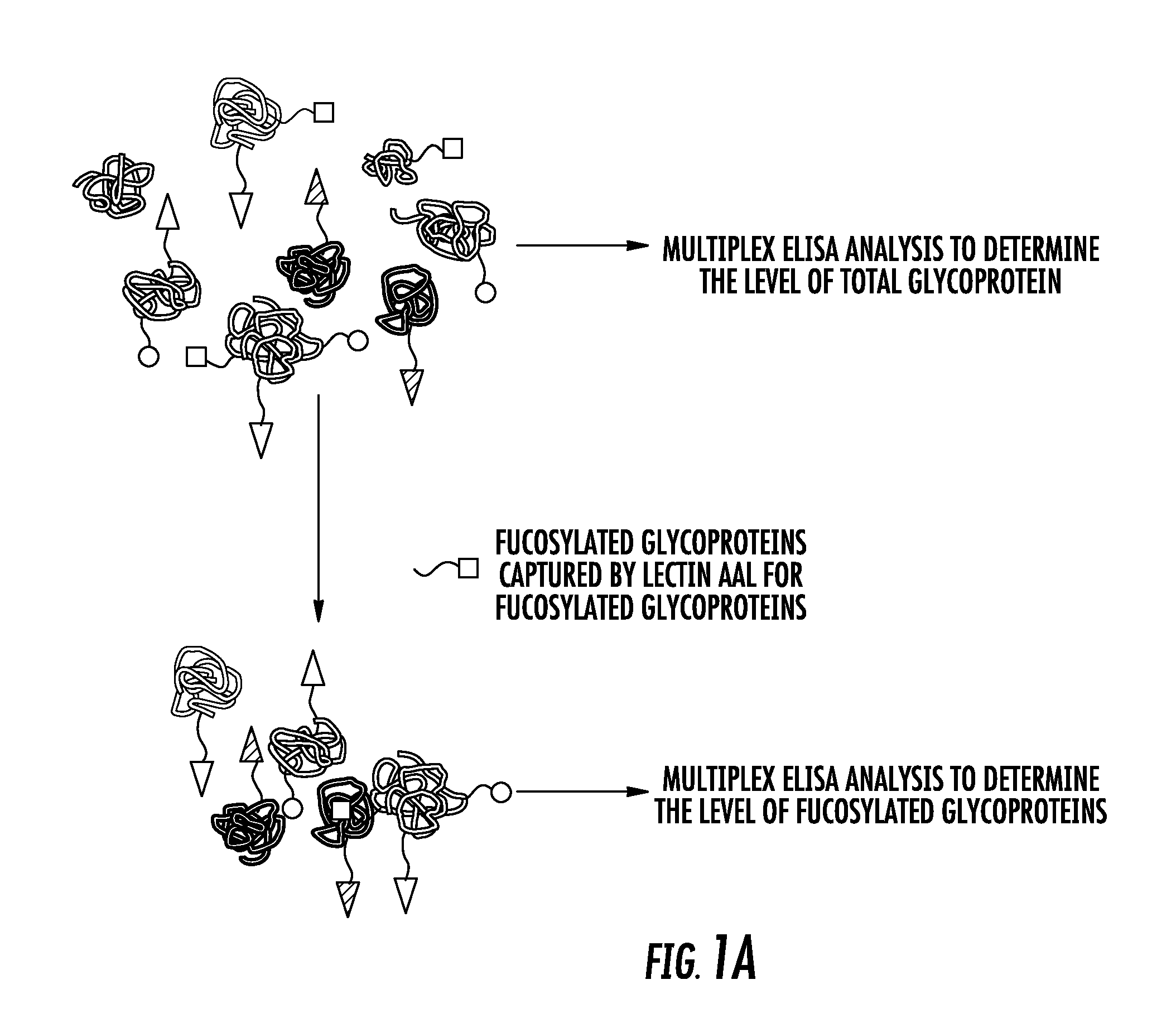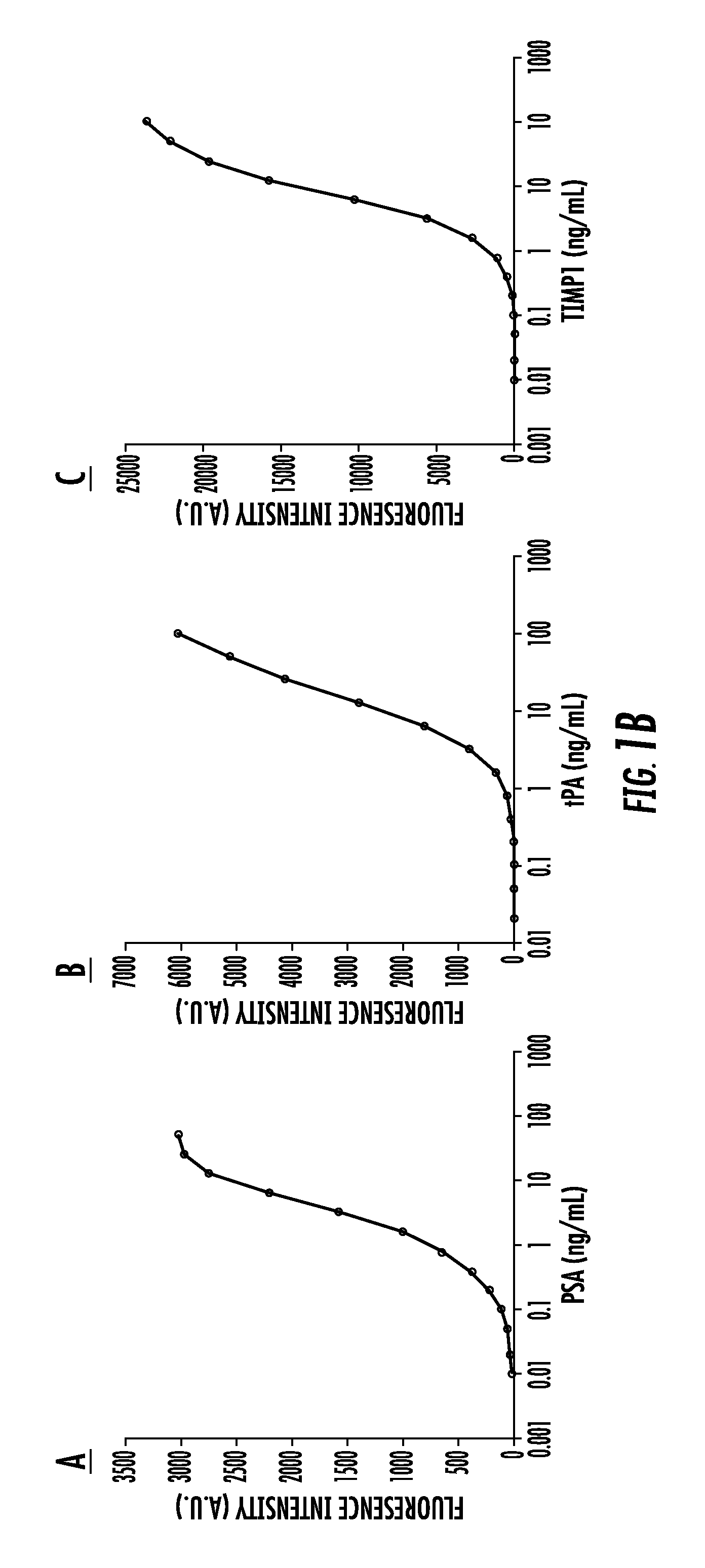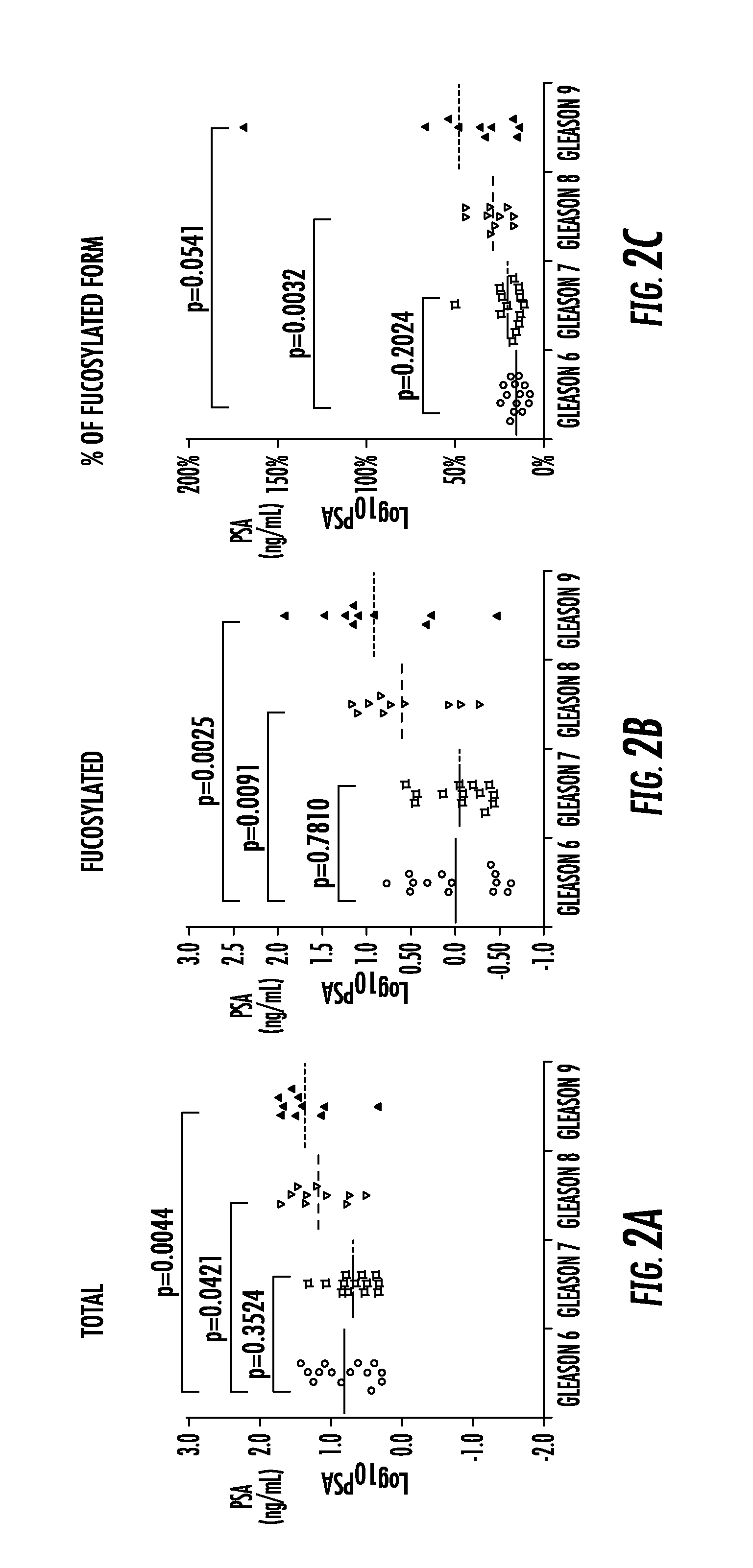Biomarkers for distinguishing between aggressive prostate cancer and non-aggressive prostate cancer
a prostate cancer and biomarker technology, applied in the field of biomarkers, can solve the problems of under-treatment of aggressive tumors, over-treatment of non-aggressive tumors, and inability to reliably use the prostate psa
- Summary
- Abstract
- Description
- Claims
- Application Information
AI Technical Summary
Benefits of technology
Problems solved by technology
Method used
Image
Examples
example 1
Serum Fucosylated Glycoproteins Improve the Differentiation of Aggressive from Non-Aggressive Prostate Cancers
[0129]It is still challenging to separate aggressive from non-aggressive prostate cancers (Pca) by non-invasive approaches. Our recent studies showed that overexpression of alpha (1-6) fucosyltransferase played an important role in Pca cells. In this study, we have investigated levels of glycoproteins and their fucosylated glycoforms in sera of Pca patients, and the potential utility of fucosylated glycoproteins in the identification of aggressive Pca.
[0130]Briefly, serum samples from histomorphology-proven Pca cases were included. Prostate-specific antigen (PSA), tissue inhibitor of metallopeptidase 1 (TIMP1) and tissue plasminogen activator (tPA), and their fucosylated glycoforms were captured by Aleuria Aurantia Lectin (AAL), followed by multiplex magnetic bead-based immunoassay. The level of fucosylated glycoproteins was correlated with patients' Gleason score of the tum...
example 2
Integrated Proteomic and Glycoproteomic Analyses of Prostate Cancer Cells Reveals Glycoprotein Changes in Protein Expression, Glycosylation Occupancy and Glycosite Heterogeneity
[0165]Prostate cancer weighs heavily on the U.S. and other world populations and androgen-deprivation therapy (ADT) remains the principal treatment for patients. Although a majority of patients initially respond to ADT, most will eventually develop castrate resistance. An increased understanding of the mechanisms that underlie the pathogenesis of castrate resistance and identify the cell surface or secreted proteins is therefore needed to develop novel therapeutic approaches and / or to develop diagnostic tests for castrate resistance disease. LNCap and PC3 are prostate cancer cell lines that have been used as cell models for androgen-dependent cancer cell line and androgen-independent cell line. Herein, we report the analysis between these two prostate cancer cell lines using integrated proteomics and glycopro...
PUM
| Property | Measurement | Unit |
|---|---|---|
| total volume | aaaaa | aaaaa |
| total volume | aaaaa | aaaaa |
| pH | aaaaa | aaaaa |
Abstract
Description
Claims
Application Information
 Login to View More
Login to View More - R&D
- Intellectual Property
- Life Sciences
- Materials
- Tech Scout
- Unparalleled Data Quality
- Higher Quality Content
- 60% Fewer Hallucinations
Browse by: Latest US Patents, China's latest patents, Technical Efficacy Thesaurus, Application Domain, Technology Topic, Popular Technical Reports.
© 2025 PatSnap. All rights reserved.Legal|Privacy policy|Modern Slavery Act Transparency Statement|Sitemap|About US| Contact US: help@patsnap.com



